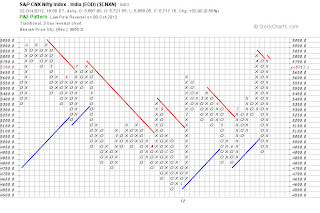Buying stock is a relatively easy process. If you think it is going up, you buy it. But when using options, there are several additional layers of complexity and decisions to be made - what strike?, which expiration? We can use the Greeks to help us make these decisions.
First we can look at the delta. The at-the-money call will have a delta of .50. This tells us two things. One, the option will increase (or decrease) by $.50 for every $1 move in the underlying stock. If a stock is trading for $25 and the 25 strike call (delta of .50) is trading for $2, then if the stock goes to $26, then the option should be worth roughly $2.50.
Out-of-the-money calls will have a delta of less than .50 and in-the-money calls have a delta greater than .50 and less than 1.
Two, the delta tells the probability of expiring in the money. A deep-in-the-money call will have an option close to 1, meaning that the probability that it will expire in the money is almost 100 percent and that it will basically trade dollar for dollar with the stock.
Theta is greatest for the near-term options and increases exponentially as the call approaches expiration. This works against us in buying short-dated options. It also gives us the least amount of time for our position to work out. Buying longer-term options - at least two to three months longer than we plan on holding the option - usually makes sense from this perspective.
We must balance this out with the vega of the call. The further out in time you go out, the higher the vega. The practical import of this is that if you are buying options with higher implied volatility (often the case before earnings, or when professional money managers are purchasing in big blocks), you have more exposure using those longer-dated options.
So, we are still left with the question of which option to buy. The answer, as with most things, is which one will give you the most bang for the buck. First, for any given underlying, look for the option with the lowest implied volatility. This will have the lowest relative theta and vega exposure, and will be the best return on investment.
The next step is to do a comparison of the delta, theta and vega relative to the actual options price. Deep-in-the-money calls have the highest delta and lowest theta and vega, but they are probably not the best compared to the price of the option. They also have the most total capital tied up and thus at risk.
Far out-of-the-money options, on the other hand, can also have low vega and theta, and always have a low delta, but again, those values may not be the best relative to the price of the option. And their probability of profit is very low.
"Near the money" options, two to three months out (depending on how long you want to hold the option) usually provide the best relative delta, theta, and vega compared to the price of the option - the most bang for the buck. Most option traders do not do this much analysis to just buy a call, and that is exactly the reason that doing so can make you a more profitable trader.




